Text
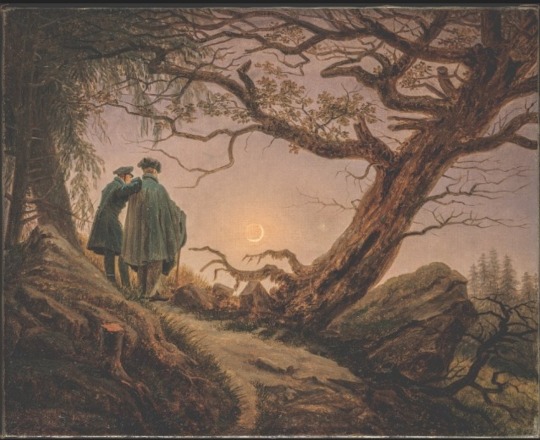
An Gealach Úr - The New Moon in the Irish Tradition, from @ScoilBheanFeasa on Instagram, complied from Dúchas accounts
In Astronomy, a New Moon is when the Sun and Moon are aligned, with the Sun and Earth on opposite sides of the Moon. During this phase, the moon is not visible to the naked eye. This phase is known in Irish as Gealach Dorcha (dark moon) or Gealach Marbh (dead moon).
In Irish tradition a New Moon is described as when the Corrán Úr (new sickle) first appears in the sky again. The new moon is known as a Gealach Úr/Nua (meaning fresh/new moon).
In Ireland each month it is tradition to greet the first visible crescent seen in the sky. According to Dúchas accounts when you see the new crescent moon for the first time you should bless yourself and that you could wish for something and it would come true. A common blessing was, I see the moon, the moon sees me, god bless the moon and god bless me*.
It is said to be unlucky to see the first crescent through glass and it is considered lucky to see the new moon over the right shoulder. People would go outside saying "Go mbeirim beo ar an am seo arís" (guh mayr-ihm byoh air on am shuh ah-reesh). Translation (may I draw breath at this time again) meaning may I live through this month.
What ever you held in your hand or what ever you were doing when you saw the first crescent you would multiply or spend the rest of the month doing. People greeted it with money in their hand and avoided working.
If the full outline of the moon is seen with the new crescent it is said the old moon is hugging the new moon and seen as a bad omen.
After this moon phase it is known as Líonadh Na Gealaí - The Waxing Moon (filling moon). Also known as An Ghealach Dheirceach - The Crescent Moon (pitted/hollow moon). The crescent after it reaches a full moon it is described as waning crescent - an corrán ag dúl ar gcúl (crescent is going backwards/ retreating).
*My variation: Feicim an Gealach Úr, feiceann an Gealach Úr mise, beannachtaí don Gealach agus beannachtaí dom".
98 notes
·
View notes
Text
Celtic Paganism Deity Guides (Part #2)
Part 1
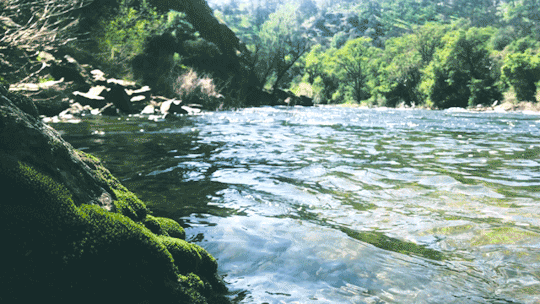
Danu
Culture: Celtic
Goddess of: Earth-Mother, Fertility, Wisdom, Wind and Water
Symbols: Crowns, Keys, Wells, Cauldron full of Water, Rivers, Celtic Tree of Life
Mother Aspects of the Triple Goddess
Colours: Blue, White, Silver, Green
Animals: Fish, Horses, Seagulls, Salmon, Snakes
Plants: Oak, Water Lily
Incense: Cinnamon, Jasmine, Lavender, Rose, Sandalwood
Other Associations: The Empress, Water and Earth
Offerings: Wine, Mead, Ale, Freshwater, Watering plants
Devotional Acts:
Start a fairy garden
Collect river water for spellwork
Clean up litter around bodies of water
Expand your knowledge and study ancient wisdom
Practice water scrying
Volunteer at a women’s shelter
Work with children

Arawn
Culture: Celtic
God of: Ruler of Annwn the Celtic Otherworld, Leader of the Wild Hunt, Death, The Underworld and Justice
Symbols: The Hounds of Arawn, Cauldron
Colours: Red, Black, White, Brown, Green, Gold, Grey
Animals: Hounds, Pigs
Plants: Reeds, Cedar, Cypress, Ivy, Honeysuckle, Sage
Incense: Dragon’s Blood, Basil, Pine, Sandalwood
Other Associations: Samhain, Saturn, Earth, Pentacles
Offerings: Game Birds such as Duck or Turkey, Bread, Honey, Milk, Mead and Ale
Devotional Acts:
Begin working with Liminal Spaces
Research Otherworld/Annwyn and the Wild Hunt
Volunteer at a Dog’s shelter
Do a ritual on Samhain

Manannan Mac Lir
Culture: Celtic
God of: The Sea, Weather and Navigation. Guardian of the Otherworld
Symbols: Cups, Cloak, A Silver Branch with three golden apples on it, Mermaids
Colours: Blue, Silver, Gold
Animals: Horse, Pig, Cow, Seal, Crane, Swan, Boar, Dog, Dolphin, Sea Horse, Whale
Plants: Alder, Apple, Hazel, Blackberry, Bramble, Reed, Meadowgrass, Yellow Flowers
Incense: Sandalwood, Frankincense, Gardenia, Sea-related Scents
Other Associations: The Summer Solstice, Neptune, The Chariot
Offerings: Yellow Flowers, Sea Water, Bread, Ale and Mead
Devotional Acts:
Visit a nearby body of water
Go swimming or sailing
Study how boats and ships are made
Support sailors
Sing Sea Shanties for him
Buy a compass

Arianrhod
Culture: Celtic
Goddess of: Fertility, Fate, Reincarnation, Beauty, Difficulties
Symbols: Silver Wheel, Full Moon, Weaving Tools, The Zodiac, Corona Borealis
Colours: Silver, White, Green, Blue, Purple
Animals: Spiders, Owls, Wolves
Plants: Ivy, Birch
Incense: Lavender, Moon, Rosemary, Sandalwood, Cedar, Pine, Frankincense
Other Associations: Water, Air, Wheel of Fortune, The Star, The Moon
Offerings: Silver Coins, White Candles, Wheat, Fruits, Home-cooked meals, Salads, Wine, Water, Hot Teas, Smoothies
Devotional Acts:
Practice Divination
Burn some candles for her
Study the Constellations and Zodiac

Cailleach
Culture: Celtic
Goddess of: Weather, Winter, Balance, Cycles, Rebirth, Sovereignty
Symbols: Crone Archetype, Snow, Mountains, Standing Stones
Colours: Silver, White, Blue
Animals: Reindeer, Cattle, Pigs, Sheep, Goats, Wolves, Deer, Cats
Plants: Holly, Gorse
Incense: Frankincense, Vanilla, Pepper, Amber, Anise
Other Associations: Veils, Yule, Samhain
Offerings: Stories (she’s very lonely), Whiskey, Portions of Meals, Soups, Bread, Apple-flavored Pastries, Blue Candles
Devotional Acts:
Embrace Winter
Always check the temperature before getting ready each morning
Take care of stray cats
Watch some deer if they cross your path
Honor her on Samhain and Yule
Collect Snow Water for her
246 notes
·
View notes
Text
Celtic Paganism Deity Guides (Part #1)
Part 2
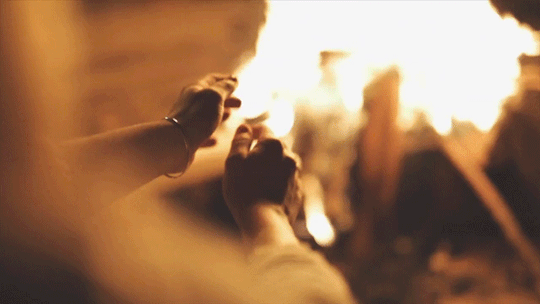
Brigid
Culture: Celtic
Goddess of: Spring, Fertility, Family, The Hearth, Childbirth, Fire, Blacksmiths, Scholars, Physicians, Prophets, Healing, Poetry, Occult knowledge, and Justice
Symbols: Brigid’s Cross, Candles, Triquetra, Faeries, Four leaf clovers, Cauldron, Chalice, Corn Dolly, Anvil, Hammer, Poetry, Forges, Hearths, Wells and Rock Formations
Colours: Green, Red, White, Gold and Blue
Animals: Snakes, Ewes, Sheep, Cows, Bees, Oxen, Owls and Hibernating animals
Plants: Cinnamon, Chamomile, Blackberry, Hawthorn, Basil, Mugwort, Apple, Heather, Dandelion, Snowdrop, Willow, Oak, Shamrock, Crocus, Trillium, Corn, Lavender and Sage
Incense: Myrrh, Wisteria, Frankincense, Cinnamon
Other Associations: Water and Fire
Offerings: Blackberries, Milk, Bread, Herbal Teas, Heather, Brigid’s Cross, Beer
Devotional Acts:
Dedicate some Art to her
Meditate with fire
Learn blacksmithing
Watch the sunrise
Say hello to Cows and Sheep
Hang a Brigid’s Cross above your doorway for blessings and protection
Study healing magic
Plant a bee garden

Cernunnos
Culture: Celtic
God of: Forests, Wild Animals, Finances, The Underworld, Death, Hunting, Balance, Grounding and Healing, Transitioning into the Afterlife and Fertility
Symbols: Horns, The Torc, Gold Coins, Serpents
Colours: Yellow, Gold, Forest Greens, Silver, Black
Animals: Stags, Elk, Goats, Deer, Bulls, Horses, Ram Horned Snakes, Snakes, Boars, Owls, Hawks, Ravens
Plants: Ash, Bayberry, Chamomile, Cedar, Cinnamon, Heliotrope, Holly, Ivy, Lavender, Juniper, Myrrh, Nettle, Oak, Patchouli, Pine, Sandalwood, Sunflower, Vine, Yarrow
Incense: Musk, Benzoin, Frankincense, Patchouli, Pine
Other Associations: Earth and Air, Sunday,
Offerings: Venison, Cooked Meats (ethically sourced), Roses, Sunflowers, Lavender, Wildflowers, Juniper Bark and Berries, Oak wood carvings, Green or Gold Candles, Cinnamon, Cloves, Pine scents, Pelts (ethically sourced), Feathers, Bones, Forest Moss, Antlers, Horns, Pine Cones, Gold Coins, Daggers, Poetry art, Celtic Music
Devotional Acts:
Hiking and Hunting
Connecting with nature
Meditation and Grounding, especially Outside
Dancing
Listening to Irish/Celtic Music
Cooking with his favorite foods
Talking with him
Singing in Irish
Wearing a pendant for him
Taking care of your body, especially if you're chronically ill

Lugh
Culture: Celtic
God of: The Sun, The Arts, Storms, The Harvest, Oaths, Kings, Justice, Craftsmanship, Smithcraft, Light and Warriors
Symbols: Sun, Spear, Harp, Slingshot
Colours: Brown, Gold, Yellow, Green, Red, Blue
Animals: Lion, Horse, Raven, Stag, Crow, Hound, Lynx
Plants: Apple, Oak, Hazel, Holly, Marigold, Goldenrod, Sunflower, Carnation, Rose, Gorse, Bay, Basil, Allspice, Rosemary, Cinnamon
Incense: Apple, Cinnamon, Rose, Frankincense, Myrrh
Other Associations: The Sun, Justice, Sunday, Air and Fire, Full or Waxing Moons
Offerings: Wine, Mead, Apple Cider, Corn, Bread, Apples, Berries, Potatoes, Beer, Harvested Fruits and Vegetables, Corn Dolls, Cloves, Gorse Flowers, Handmade Crafts
Devotional Acts:
Make Art, in any form, for him
Learn self defense
Watch the sunrise
Treat your loved ones to a lovely meal and give a plate to him
Support political and law-based justice, and sign petitions or give donations to make sure justice is appropriately given
Try to become a confident and witty person
Buy a kilt and wear in unapologetically
Go to a Renaissance Fair
Buy medieval weapons, especially spears and slingshots
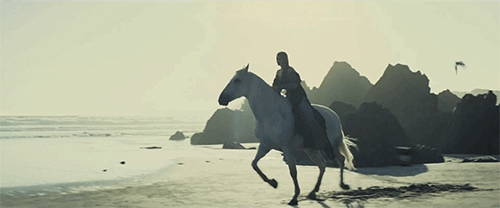
Rhiannon
Culture: Welsh
Goddess of: The Moon, Horses, Songbirds, Wind, Gates, Horseshoes, Love, Beauty, Fate, Divination, Prosperity, Abundance and Healing. She protects against disaster and humiliation.
Symbols: The Moon, Horseshoes, Gates, The Winds
Colours: Green, Silver, Black, White, Grey, Red, Maroon, Brown
Animals: Horse, Frog, Dog, Songbird, Dragon, Badger, Hummingbird
Plants: Cedar, Pine, Narcissus, Daffodils, Pansies, Rosemary, Sage, Bay, Lavender, All White Flowers
Incense: Sandalwood, Cedar, Pine, Lavender, Frankincense
Other Associations: 7, Waning Moon Phases, Monday
Offerings: Soft-sounding Music, White Candles with the number 7 carved into them, Apples, Willow Leaves or Bark, Ivy, Evergreens, White Flowers, Lavender Oil, Lavender Candles, Studying or Practicing with Liminal Spaces and the In Between, including Meditation, Astral Travel, Dreamwork and Mediumship
Devotional Acts:
Sing for her
Make art, in any form, for her
Show extra love to animals, especially horses, dogs and songbirds
Talk to her or the moon
Sit outside on a windy day and enjoy the breeze
Fly a kite
Keep a dream journal
Make or Buy a Birdhouse

Aengus Óg
Culture: Celtic
God of: Love, Poetry, Inspiration, Youth, Summer and Healing
Symbols: Swans, Golden Harp
Colours: Green, Pink, Red
Animals: Swan, Cats, Deer, Doves, Sparrows, Songbirds
Plants: Strawberries, Rose, Mistletoe, Violet, Birch, Cedar, Elder, Sycamore, Basil, Cherries
Incense: Cinnamon, Jasmine, Lavender, Rose, Sandalwood
Other Associations: Venus, Copper, Air, The World, Justice, The Lovers
Offerings: Red Roses, Strawberry, Mead, Beer, Honey, Eggs, Butter, Milk, Bread
Devotional Acts:
Feed Local Birds
Sing love songs
Use more roses in your spellwork
Keep a dream journal
Never give up on your goals
Talk to him
Ask for help when you need it

The Morrigan
Culture: Celtic
Goddess of: War, Witchcraft, Death, Battle, Sovereignty, Life, The Land, Fresh water, Fertility, Prophecy, Protection, Retribution and Fate (especially Foretelling Doom)
Symbols: Red Cloak, Spear, Chariot, Sword, Shield, Triskele
Colours: Red, Black, White, Blue, Green
Animals: Crow, Raven, Horse, Eel, Serpent, Heifer, Wolf
Plants: Snapdragon, Willow, Aspen, Rowan, Hawthorn, Yew, Belladonna, Mugwort, Nightshade (VERY DANGEROUS)
Incense: Dragon’s Blood, Juniper, Night Queen, Pumpkin, Cinnamon, Sandalwood
Other Associations: Earth, Tuesday, Samhain, Queen of Swords, Justice, Death
Offerings: Red Wine, Red Meats, Red Beans, Bread, Acorns, Water, Milk, Beer and Ale, Chai Tea, Peppermint Tea, Pumpkin-flavored Things, Apple-flavored Things, Any cow products, Coffee
Devotional Acts:
Practice Divination
Stand up for yourself and others
Practice magic
Sing for her
Take care of yourself
Read her myths
Practice with weapons safely
Make art for her, in any form

The Dagda
Culture: Celtic
God of: Fertility, Agriculture, Strength, Wisdom, Magic, Druidry, Kingship, Abundance, Order, Magic, Music and Balance
Symbols: Magic Cauldron, Harp of Seasons, Large Club that can both give and take life, Sun Wheel
Colours: Red, Blue, Green, Brown
Animals: Pig
Plants: Oak, Oats, Willow, Hawthorn, Chamomile
Incense: Cedar, Juniper, Orange
Other Associations: Earth, Fire, Strength, Wheel of Fortune, The World, King of Pentacles, King of Wands
Offerings: Acorns, Music, Porridge, Ale, Beer, Mead, Butter
Devotional Acts:
Come up with your own mantra that inspires you
Become a mentor or father figure to someone who needs it
Research Druidry
Study agriculture
Plant an herb garden
Document and admire the changing of seasons in your local area
Listen to harp music

Aine
Culture: Celtic
Goddess of: Summer, Wealth, Sovereignty, Love, Fertility, Protection, Wealth, Agriculture, The Sun and the Moon and Queen of the Faeries
Symbols: Silver and White Items, Meadowsweet, The Moon
Colours: Red, Gold, Green, Blue and Tan
Animals: Red Mare, Horse, Rabbit, Swan, Cattle
Plants: Angelica, Blackberry, Cowslip, Elder, Orchid, Fennel, Flax, Garlic, Mugwort, Nettle, Oak, Hawthorn, Mistletoe, Alfalfa, Ash, Agrimony, Ash, Birch, Broom, Holly, Lavender, Meadow-sweet, Gorse
Incense: Dragon’s Blood, Fairy Dust, Orchid, Lavender
Other Associations: Midsummer, Air, South, The Sun, Suit of Wands, Queen of Pentacles,
Offerings: Milk, Bread, Home-grown Produce, Cream, Fire and Candles, Sunflowers, Yellow Flowers, Honey, Summer Fruits, Oranges, Bee-related Items
Devotional Acts:
Write a hymn for her
Leave offerings for the fae to keep the peace
Gardening, especially for herbs and flowers
Bee-keeping
Celestial and Fairy Magic
Light candles frequently
Have a bonfire
Spellwork at dawn or dusk

Cerridwen
Culture: Welsh
Goddess of: The Moon, Luck, Poetry, Change, Rebirth, Transformation, The Underworld, Death, Fertility, Inspiration, Magic and Knowledge
Symbols: Cauldron, Dark Moon, Lunar Cycles, Caves
Colours: Silver, Purple, Black, Grey, Green
Animals: White Pig, Greyhound, Crow, Hen, Hare, Otter, Hawk
Plants: Corn, Grain, Vervain, Acorns, Apple, Oak, Hazel
Incense: Sandalwood, Patchouli, Sage, Mugwort
Other Associations: Monday, North, The Moon, Death, The Magician, Suit of Cups, Midnight
Offerings: Pork, Bread, Milk, Water, Wheat, White and Green Candles, Barley, Rice, Peanuts, Poppy or Sunflower Seeds, Vervain, Grain-based Products
Devotional Acts:
Talk to the moon
Write Poetry about her
Buy a cauldron for spellwork
Make some potions
Bake some wheat bread
Take care of Pigs
Study something you’re genuinely interested in
331 notes
·
View notes
Text
Celtic Paganism Deity Guides (Part #2)
Part 1

Danu
Culture: Celtic
Goddess of: Earth-Mother, Fertility, Wisdom, Wind and Water
Symbols: Crowns, Keys, Wells, Cauldron full of Water, Rivers, Celtic Tree of Life
Mother Aspects of the Triple Goddess
Colours: Blue, White, Silver, Green
Animals: Fish, Horses, Seagulls, Salmon, Snakes
Plants: Oak, Water Lily
Incense: Cinnamon, Jasmine, Lavender, Rose, Sandalwood
Other Associations: The Empress, Water and Earth
Offerings: Wine, Mead, Ale, Freshwater, Watering plants
Devotional Acts:
Start a fairy garden
Collect river water for spellwork
Clean up litter around bodies of water
Expand your knowledge and study ancient wisdom
Practice water scrying
Volunteer at a women’s shelter
Work with children

Arawn
Culture: Celtic
God of: Ruler of Annwn the Celtic Otherworld, Leader of the Wild Hunt, Death, The Underworld and Justice
Symbols: The Hounds of Arawn, Cauldron
Colours: Red, Black, White, Brown, Green, Gold, Grey
Animals: Hounds, Pigs
Plants: Reeds, Cedar, Cypress, Ivy, Honeysuckle, Sage
Incense: Dragon’s Blood, Basil, Pine, Sandalwood
Other Associations: Samhain, Saturn, Earth, Pentacles
Offerings: Game Birds such as Duck or Turkey, Bread, Honey, Milk, Mead and Ale
Devotional Acts:
Begin working with Liminal Spaces
Research Otherworld/Annwyn and the Wild Hunt
Volunteer at a Dog’s shelter
Do a ritual on Samhain

Manannan Mac Lir
Culture: Celtic
God of: The Sea, Weather and Navigation. Guardian of the Otherworld
Symbols: Cups, Cloak, A Silver Branch with three golden apples on it, Mermaids
Colours: Blue, Silver, Gold
Animals: Horse, Pig, Cow, Seal, Crane, Swan, Boar, Dog, Dolphin, Sea Horse, Whale
Plants: Alder, Apple, Hazel, Blackberry, Bramble, Reed, Meadowgrass, Yellow Flowers
Incense: Sandalwood, Frankincense, Gardenia, Sea-related Scents
Other Associations: The Summer Solstice, Neptune, The Chariot
Offerings: Yellow Flowers, Sea Water, Bread, Ale and Mead
Devotional Acts:
Visit a nearby body of water
Go swimming or sailing
Study how boats and ships are made
Support sailors
Sing Sea Shanties for him
Buy a compass

Arianrhod
Culture: Celtic
Goddess of: Fertility, Fate, Reincarnation, Beauty, Difficulties
Symbols: Silver Wheel, Full Moon, Weaving Tools, The Zodiac, Corona Borealis
Colours: Silver, White, Green, Blue, Purple
Animals: Spiders, Owls, Wolves
Plants: Ivy, Birch
Incense: Lavender, Moon, Rosemary, Sandalwood, Cedar, Pine, Frankincense
Other Associations: Water, Air, Wheel of Fortune, The Star, The Moon
Offerings: Silver Coins, White Candles, Wheat, Fruits, Home-cooked meals, Salads, Wine, Water, Hot Teas, Smoothies
Devotional Acts:
Practice Divination
Burn some candles for her
Study the Constellations and Zodiac

Cailleach
Culture: Celtic
Goddess of: Weather, Winter, Balance, Cycles, Rebirth, Sovereignty
Symbols: Crone Archetype, Snow, Mountains, Standing Stones
Colours: Silver, White, Blue
Animals: Reindeer, Cattle, Pigs, Sheep, Goats, Wolves, Deer, Cats
Plants: Holly, Gorse
Incense: Frankincense, Vanilla, Pepper, Amber, Anise
Other Associations: Veils, Yule, Samhain
Offerings: Stories (she’s very lonely), Whiskey, Portions of Meals, Soups, Bread, Apple-flavored Pastries, Blue Candles
Devotional Acts:
Embrace Winter
Always check the temperature before getting ready each morning
Take care of stray cats
Watch some deer if they cross your path
Honor her on Samhain and Yule
Collect Snow Water for her
246 notes
·
View notes
Text
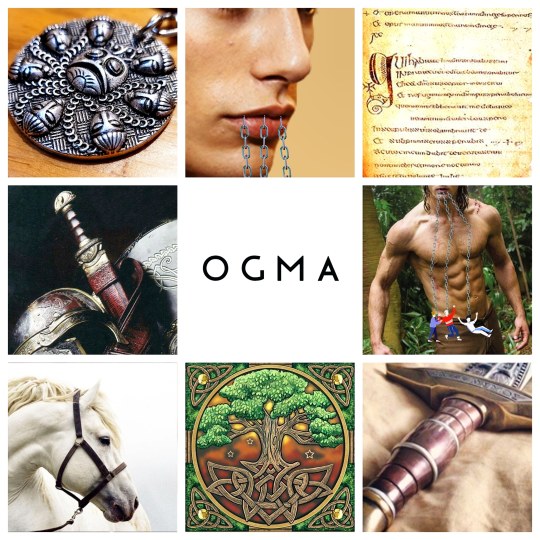
OGMA - The God of Language - (Celtic Mythology)
_____________________________________________
Additional Info:
https://druidry.org/resources/ogma-the-god-of-speech-language
https://deity-of-the-week.blogspot.com/2011/12/ogma.html
https://en.wikipedia.org/wiki/Ogma
48 notes
·
View notes
Photo
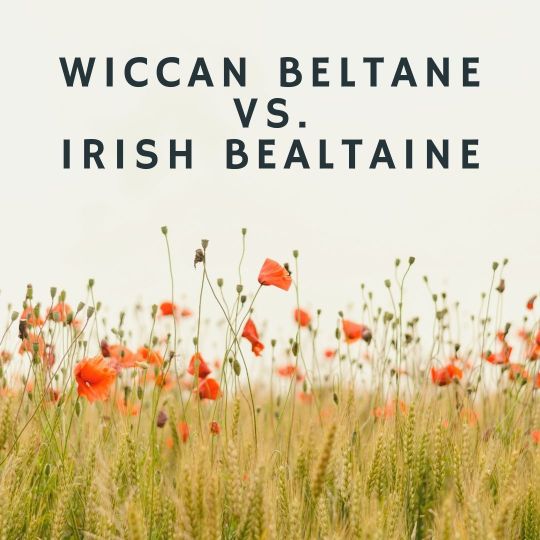
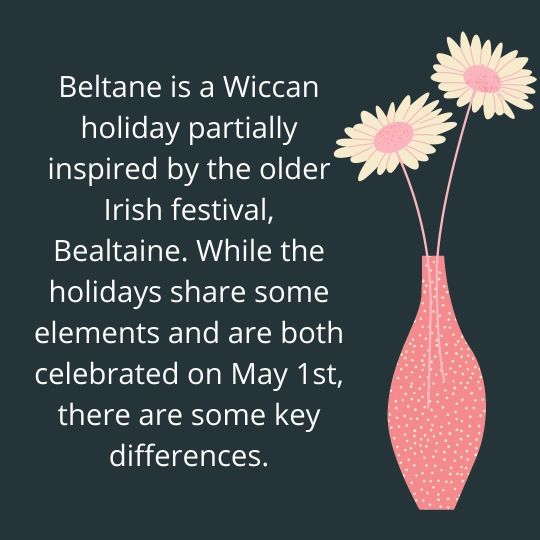
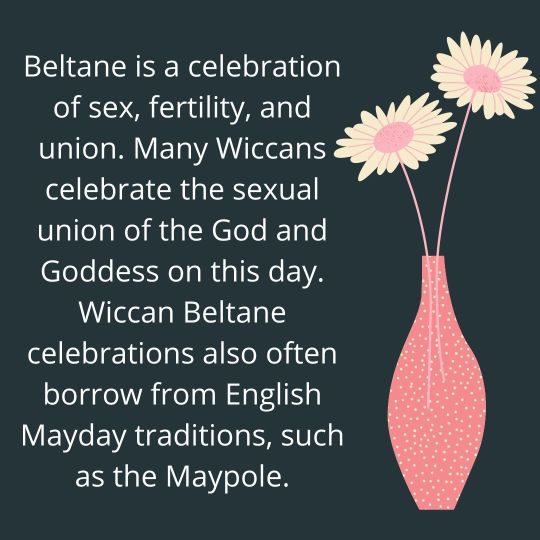
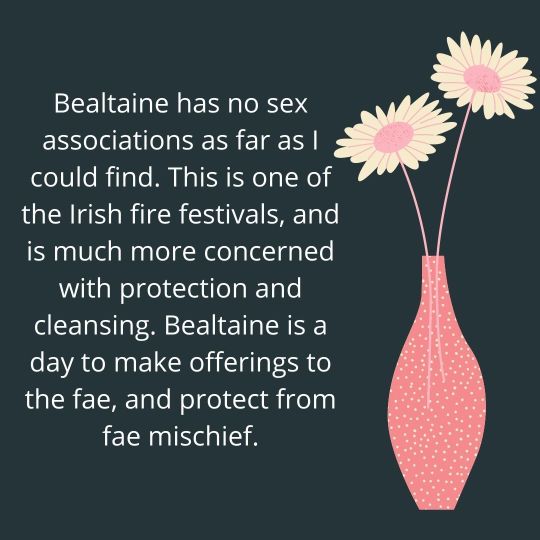
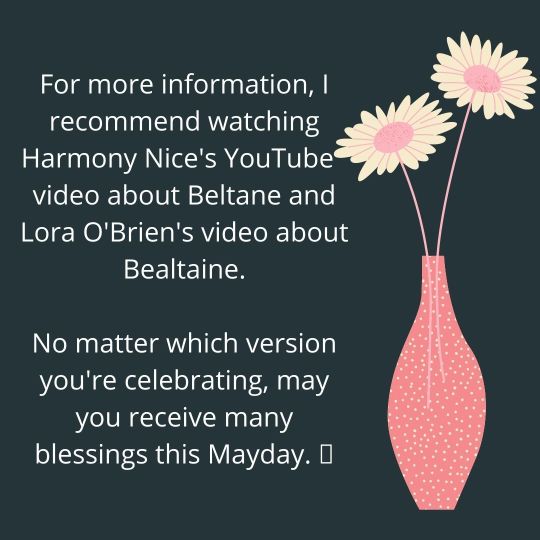
No matter which version you are celebrating, I hope you all have a blessed Beltane/Bealtaine! 💛
1K notes
·
View notes
Text
The Morrígan - Masterpost

General Description
The Morrígan (Irish: Mór-Ríoghain) is an Irish goddess of death, war and prophecy.
In the myths, she would often appear to foretell the outcome of a battle or to foretell a doom. When appearing to someone, she would usually take another form which brings us to her next special ability, and that is shape-shifting.
She was a great shape-shifter. Her most famous shape is the one of a raven. Besides the raven, she would also appear as a beautiful maiden, an old hag, a wolf, an eel and a heifer.
The Morrígan is described as a very powerful and sometimes even erotic character. That is why a lot of people see her as a goddess of sovereignty, feminine energy and sexuality too.
A single deity or a trinity?
There is a discussion about whether The Morrígan is a single deity or a trinity consisting of a three different but closely related goddesses - Badb, Macha and Nemain.
In the myths, there is a great inconsistency when it comes to her names. It is stated that The Morrígan is a daughter of Ernmas, but Badb and Macha are also described as his daughters. So, it is possible that The Morrígan is a single deity, who then has two sisters.
However, there is also a theory where the three sisters, Badb, Macha and Anand, are collectively named as "The Morrígna", which would then make The Morrígan a trinity.
In Lebor Gabála Érenn it is stated: "Badb and Macha and Anand, of whom are the Paps of Anu in Luachar were the three daughters of Ernmas the she-farmer." (...) "Ernmas had other three daughters, Badb and Macha and Morrigu, whose name was Anand. Her three sons were Glon and Gaim and Coscar." (...) "Badb and Macha, greatness of wealth, Morrigu - springs of craftiness, sources of bitter fighting were the three daughters of Ernmas."
When it comes to me and my opinion:
I have always seen The Morrígan as a single deity, and not a trinity. Then, Badb, Macha and Nemain (or Morrigu or Anand - The Morrígan) could be single, separated deities, or they are just The Morrigan's different shapes, since she is a great shape-shifter, so they are actually different persons but in their core all of them are actually one person, The Morrígan - that (second) theory seems most logical to me.
I am talking highly theoretically here and theory is not always so important, especially not in Paganism. What matters are our experiences with the deities and our gut feeling, so I would say that you should go for a theory that seems more logical to you and that gives you a better "frame" for your spirituality.
Offerings
These are the offerings that I find suitable for The Morrígan:
Red Wine
Meat
Milk and Diary Products
Fish
Black Tea
Divination
Pictures or symbols of animals that The Morrígan shape-shifted to
Coffee
Dark/Bitter Chocolate
All red fruit and their juices
Sharp Items (swords, blades, knives...)
Visiting a graveyard
Spirit Work
Crow/Raven feathers
Black, purple or red candles
Frankincense
Passages from the myths
The Second Battle of Mag Tuired:
"Then she said to him, 'Undertake a battle of overthrowing.' The Morrigan said to Lug, 'Awake...'"
The Dagda had a house in Glen Edin in the north, and he had arranged to meet a woman in Glen Edin a year from that day, near the All Hallows of the battle. The Unshin of Connacht roars to the south of it. He saw the woman at the Unshin in Corann, washing, with one of her feet at Allod Echae (that is, Aghanagh) south of the water and the other at Lisconny north of the water. There were nine loosened tresses on her head. The Dagda spoke with her, and they united. "The Bed of the Couple" was the name of that place from that time on. (The woman mentioned here is the Morrigan). Then she told the Dagda that the Fomoire would land at Mag Ceidne, and that he should summon the aes dana of Ireland to meet her at the Ford of the Unshin, and she would go into Scetne to destroy Indech mac De Domnann, the king of the Fomoire, and would take from him the blood of his heart and the kidneys of his valor. Later she gave two handfuls of that blood to the hosts that were waiting at the Ford of the Unshin. Its name became "The Ford of Destruction" because of that destruction of the king."
"'And you, Morrigan,' said Lug, 'what power?' 'Not hard to say,' she said. 'I have stood fast; I shall pursue what was watched; I will be able to kill; I will be able to destroy those who might be subdued.'"
"Then the Morrigan the daughter of Ernmas came, and she was strengthening the Tuatha De to fight the battle resolutely and fiercely. She then chanted the following poem: 'Kings arise to the battle!' Immediately afterwards the battle broke, and the Fomoire were driven to the sea."
"Then after the battle was won and the slaughter had been cleaned away, the Morrigan, the daughter of Ernmas, proceeded to announce the battle and the great victory which had occurred there to the royal heights of Ireland and to its sid−hosts, to its chief waters and to its rivermouths. And that is the reason Badb still relates great deeds. 'Have you any news?' everyone asked her then.
'Peace up to heaven.
Heaven down to earth.
Earth beneath heaven,
Strength in each,
A cup very full,
Full of honey;
Mead in abundance.
Summer in winter,
Peace up to heaven.'
She also prophesied the end of the world, foretelling every evil that would occur then, and every disease and every vengeance; and she chanted the following poem:
'I shall not see a world
Which will be dear to me:
Summer without blossoms,
Cattle will be without milk,
Women without modesty,
Men without valor.
Conquests without a king...
Woods without mast.
Sea without produce...
False judgements of old men.
False precedents of lawyers,
Every man a betrayer.
Every son a reaver.
The son will go to the bed of his father,
The father will go to the bed of his son.
Each his brother's brother−in−law.
He will not seek any woman outside his house...
An evil time,
Son will deceive his father,
Daughter will deceive...'"
Táin Bó Cúalnge:
"It is the same day that the Morrigan, daughter of Ernmas, came from the Sid, so that she was on the pillar in Temair Cuailnge, taking a warning to the Dun of Cualnge before the men of Ireland, and she began to speak to him, and 'Good, O wretched one, O Dun of Cualnge,' said the Morrigan, 'keep watch, for the men of Ireland have reached thee, and they will take thee to their camp unless thou keepest watch'; and she began to take a warning to him thus, and uttered her words on high."
"Cuchulainn saw a young woman coming towards him, with a dress of every colour on, and her form very excellent."
"'I will be a help to you. … I shall be more troublesome to you,' said she, 'when I come against you when you are in combat against the men. I will come in the form of an eel about your feet in the ford, so that you shall fall."
"I will drive the cattle on the ford to you, in the form of a grey she-wolf."
"I will come to you in the form of a hornless red heifer before the cattle. They will rush on you on the plains(?), and on the fords, and on the pools, and you will not see me before you."
"When Cuchulainn was in this great weariness, the Morrigan met him in the form of an old hag, and she blind and lame, milking a cow with three teats, and he asked her for a drink. She gave him milk from a teat. Then her head was healed so that it was whole. She gave the milk of the second teat, and her eye was whole; and gave the milk of the third teat, and her leg was whole. So that this was what he said about each thing of them, 'A doom of blessing on you,' said he. 'You told me,' said the Morrigan, 'I should not have healing from you for ever.' 'If I had known it was you,' said Cuchulainn, 'I would not have healed you ever.'"
Sources
https://mythopedia.com/celtic-mythology/gods/morrigan/
http://www.yorku.ca/inpar/tain_faraday.pdf
http://public-library.uk/ebooks/59/98.pdf
https://www.ecauldron.net/forum/index.php?topic=8884.0;p=0
Artwork: YaxeMoon (https://www.deviantart.com/yaxemoon/art/The-Morrigan-Celtic-Goddess-796517106)
1K notes
·
View notes
Text
small but effective ways to feel connected to your craft (for when work/sickness/mental health gets in the way)

-carry your crystals around with you! in a lil pouch maybe!
-do small meditation sessions when you have breaks during the day! (meditation can be different for everyone, sitting still with eyes closed doesn’t work for some! try walking, jogging, listening to music, etc. to clear your mind)
-fill your home with plants & herbs according to their magical correspondences (but you don’t need to follow the correspondences at all if you don’t want to!!!)
-wear black for protection!!
-use windy days to cleanse yourself!
-dedicate/enchant meals before you eat them
-enchant your jewelry, clothes, etc.
-use veiling when you leave your home to protect you!
-sleep with your tarot cards, carry them around
-make moon water & use it for your plants!!
-spend some time outside/in nature when you can
-draw your sigils on your face when you do your makeup! or if you don’t wear makeup, trace them with moisturizer or sunscreen!
-if you have time, sew the sigils into your clothing so they’ll always be on you!!
-stay hydrated!! this is vague but important in all aspects of your life, it will help give you energy:)
-be crafty!! all art is magical
never feel bad for taking a break for your physical health, mental health or whatever it may be. it doesn’t make you any less of a witch <3
857 notes
·
View notes
Text
The Morrígan - Masterpost

General Description
The Morrígan (Irish: Mór-Ríoghain) is an Irish goddess of death, war and prophecy.
In the myths, she would often appear to foretell the outcome of a battle or to foretell a doom. When appearing to someone, she would usually take another form which brings us to her next special ability, and that is shape-shifting.
She was a great shape-shifter. Her most famous shape is the one of a raven. Besides the raven, she would also appear as a beautiful maiden, an old hag, a wolf, an eel and a heifer.
The Morrígan is described as a very powerful and sometimes even erotic character. That is why a lot of people see her as a goddess of sovereignty, feminine energy and sexuality too.
A single deity or a trinity?
There is a discussion about whether The Morrígan is a single deity or a trinity consisting of a three different but closely related goddesses - Badb, Macha and Nemain.
In the myths, there is a great inconsistency when it comes to her names. It is stated that The Morrígan is a daughter of Ernmas, but Badb and Macha are also described as his daughters. So, it is possible that The Morrígan is a single deity, who then has two sisters.
However, there is also a theory where the three sisters, Badb, Macha and Anand, are collectively named as "The Morrígna", which would then make The Morrígan a trinity.
In Lebor Gabála Érenn it is stated: "Badb and Macha and Anand, of whom are the Paps of Anu in Luachar were the three daughters of Ernmas the she-farmer." (...) "Ernmas had other three daughters, Badb and Macha and Morrigu, whose name was Anand. Her three sons were Glon and Gaim and Coscar." (...) "Badb and Macha, greatness of wealth, Morrigu - springs of craftiness, sources of bitter fighting were the three daughters of Ernmas."
When it comes to me and my opinion:
I have always seen The Morrígan as a single deity, and not a trinity. Then, Badb, Macha and Nemain (or Morrigu or Anand - The Morrígan) could be single, separated deities, or they are just The Morrigan's different shapes, since she is a great shape-shifter, so they are actually different persons but in their core all of them are actually one person, The Morrígan - that (second) theory seems most logical to me.
I am talking highly theoretically here and theory is not always so important, especially not in Paganism. What matters are our experiences with the deities and our gut feeling, so I would say that you should go for a theory that seems more logical to you and that gives you a better "frame" for your spirituality.
Offerings
These are the offerings that I find suitable for The Morrígan:
Red Wine
Meat
Milk and Diary Products
Fish
Black Tea
Divination
Pictures or symbols of animals that The Morrígan shape-shifted to
Coffee
Dark/Bitter Chocolate
All red fruit and their juices
Sharp Items (swords, blades, knives...)
Visiting a graveyard
Spirit Work
Crow/Raven feathers
Black, purple or red candles
Frankincense
Passages from the myths
The Second Battle of Mag Tuired:
"Then she said to him, 'Undertake a battle of overthrowing.' The Morrigan said to Lug, 'Awake...'"
The Dagda had a house in Glen Edin in the north, and he had arranged to meet a woman in Glen Edin a year from that day, near the All Hallows of the battle. The Unshin of Connacht roars to the south of it. He saw the woman at the Unshin in Corann, washing, with one of her feet at Allod Echae (that is, Aghanagh) south of the water and the other at Lisconny north of the water. There were nine loosened tresses on her head. The Dagda spoke with her, and they united. "The Bed of the Couple" was the name of that place from that time on. (The woman mentioned here is the Morrigan). Then she told the Dagda that the Fomoire would land at Mag Ceidne, and that he should summon the aes dana of Ireland to meet her at the Ford of the Unshin, and she would go into Scetne to destroy Indech mac De Domnann, the king of the Fomoire, and would take from him the blood of his heart and the kidneys of his valor. Later she gave two handfuls of that blood to the hosts that were waiting at the Ford of the Unshin. Its name became "The Ford of Destruction" because of that destruction of the king."
"'And you, Morrigan,' said Lug, 'what power?' 'Not hard to say,' she said. 'I have stood fast; I shall pursue what was watched; I will be able to kill; I will be able to destroy those who might be subdued.'"
"Then the Morrigan the daughter of Ernmas came, and she was strengthening the Tuatha De to fight the battle resolutely and fiercely. She then chanted the following poem: 'Kings arise to the battle!' Immediately afterwards the battle broke, and the Fomoire were driven to the sea."
"Then after the battle was won and the slaughter had been cleaned away, the Morrigan, the daughter of Ernmas, proceeded to announce the battle and the great victory which had occurred there to the royal heights of Ireland and to its sid−hosts, to its chief waters and to its rivermouths. And that is the reason Badb still relates great deeds. 'Have you any news?' everyone asked her then.
'Peace up to heaven.
Heaven down to earth.
Earth beneath heaven,
Strength in each,
A cup very full,
Full of honey;
Mead in abundance.
Summer in winter,
Peace up to heaven.'
She also prophesied the end of the world, foretelling every evil that would occur then, and every disease and every vengeance; and she chanted the following poem:
'I shall not see a world
Which will be dear to me:
Summer without blossoms,
Cattle will be without milk,
Women without modesty,
Men without valor.
Conquests without a king...
Woods without mast.
Sea without produce...
False judgements of old men.
False precedents of lawyers,
Every man a betrayer.
Every son a reaver.
The son will go to the bed of his father,
The father will go to the bed of his son.
Each his brother's brother−in−law.
He will not seek any woman outside his house...
An evil time,
Son will deceive his father,
Daughter will deceive...'"
Táin Bó Cúalnge:
"It is the same day that the Morrigan, daughter of Ernmas, came from the Sid, so that she was on the pillar in Temair Cuailnge, taking a warning to the Dun of Cualnge before the men of Ireland, and she began to speak to him, and 'Good, O wretched one, O Dun of Cualnge,' said the Morrigan, 'keep watch, for the men of Ireland have reached thee, and they will take thee to their camp unless thou keepest watch'; and she began to take a warning to him thus, and uttered her words on high."
"Cuchulainn saw a young woman coming towards him, with a dress of every colour on, and her form very excellent."
"'I will be a help to you. … I shall be more troublesome to you,' said she, 'when I come against you when you are in combat against the men. I will come in the form of an eel about your feet in the ford, so that you shall fall."
"I will drive the cattle on the ford to you, in the form of a grey she-wolf."
"I will come to you in the form of a hornless red heifer before the cattle. They will rush on you on the plains(?), and on the fords, and on the pools, and you will not see me before you."
"When Cuchulainn was in this great weariness, the Morrigan met him in the form of an old hag, and she blind and lame, milking a cow with three teats, and he asked her for a drink. She gave him milk from a teat. Then her head was healed so that it was whole. She gave the milk of the second teat, and her eye was whole; and gave the milk of the third teat, and her leg was whole. So that this was what he said about each thing of them, 'A doom of blessing on you,' said he. 'You told me,' said the Morrigan, 'I should not have healing from you for ever.' 'If I had known it was you,' said Cuchulainn, 'I would not have healed you ever.'"
Sources
https://mythopedia.com/celtic-mythology/gods/morrigan/
http://www.yorku.ca/inpar/tain_faraday.pdf
http://public-library.uk/ebooks/59/98.pdf
https://www.ecauldron.net/forum/index.php?topic=8884.0;p=0
Artwork: YaxeMoon (https://www.deviantart.com/yaxemoon/art/The-Morrigan-Celtic-Goddess-796517106)
1K notes
·
View notes
Text
🕯☽☾🔮🖤 looking for active witchblrs! 🕯☽☾🔮🖤
A little bit worried that witchtok sucked up the life of witch tumblr, so please reblog if you’re an active/practicing witch on tumblr as of July 12, 2021!
Please be POC/LBGT inclusive!!!
Sidenote: I am a beginner closet witch looking to find my path, interested in norse/celtic/hellenic pantheons. But all are welcome and the more folks I can follow, the more knowledge I can gain, and the more people I can meet!
☽☾ Thanks in advance, Blessed Be! ☽☾

1K notes
·
View notes
Text
World Religion Resources (Part 2)
Hermeticism:
Hermeticism
Hermeticism and the 7 Principles
What is Hermeticism?
The God Hermes Trismegistus
Hermes Trismegistus
The 7 Hermetic Laws
The All, the Supreme Deity
The Hermes’ and Hermeticism
The Emerald Tablet of Hermes
The Emerald Tablets of Thoth the Atlantean
The Kybalion
The Corpus Hermeticum (Book)
The Stone of the Philosophers
Alchemy
Inner Hermetic Teachings (Book)
Hermetic Initiation
Hellenism (Greek Polytheism):
Mythos (Book)
The Creation Myth
Legends, Plays, and other Texts
Ancient Greek Religion
The Virtues of Hellenism
Theoi Greek Mythology
Dionysus Myths
The Rape of Persephone Myth
Greek Religion Beliefs
Gaia, the Earth
Rhea, the Mother Goddess
Zeus, King of the Gods
Hera, Queen of the Gods
Athena, the Illuminating Warrior
Athena Myths
Prometheus, the Martyr
Apollo, the Golden One
Aphrodite, Goddess of Desire
Poseidon, God of the Sea
Hades, God of Death and the Underworld
The Muses
The Fates
The Furies
Nymphs
Sirens
Gorgons
Harpies
Hymns to the Gods
Homeric Hymns
Hymns to Dionysus
Hades, the Underworld
Elysium
The Hellenic Ethnic Religion Explained (Video)
Celtic Polytheism:
Religion of the Celts
Beliefs and Practices
List of Deities
Encyclopedia of Myths and Folklore
Danu and Anu
The Tuatha De Danann
The Dagda, All-Father of Ireland
The Morrigan
The Morrigan and Her Sisters
Cernunnos
Cernunnos, God of the Wilds
Brigid
Brigid - Goddess and Saint
Goddess Brigid
The Legend of Cú Chulainn
Nuada of the Silver Arm
Celtic Pagan Prayers
The Ogham
Making Offerings
The Aos Si and Faeries
Asatru (Nordic Polytheism):
Asatru
Questions and Answers on Asatru
Asatru Facts
Lore and Texts
The Creation Myth
Ragnarok
The Death of Baldur
The Nine Worlds
Yggdrasil
The Bifrost
Odin, the All-Father
Frigg, Queen of the Gods
Thor
Freyja
Hel, Queen of the Underworld
Loki, the Malicious Trickster
Fenrir, the Devourer
The Valkyries
The Elves
The Dwarves
Land Spirits
The Wild Hunt
Nordic Shamanism: Seidr
Courses in Seidr
Seidr
The Runes
Runes and Rune Magic
Rune Magic Handbook
Asatru Music - Wardruna
Slavic Polytheism:
Deities and Myths
Slavic Gods
Top 10 Deities
Veles
Perun
Lada
Goddess Lada
Goddess Mokosh
Triglav, the Three-Headed God
Part 1 | Part 3 | Part 4 | Part 5 | Part 6
848 notes
·
View notes
Text
Hellenic Hair Wrapping Ideas
So I’ve been surfing the web for good hair wrapping tutorials, and I actually found a bunch of really cool ones! Most are from youtube, but some are just online tutorials with words and images :)
Some of the videos are sped up, so if that bothers you, I suggest clicking on the starred ones ^_^ (they include photo tutorials) Others are in different languages, but the actual video is easy to go off of :)
12 Head Wrap Scarf Tutorials in Under 7 Minutes ~ MOAMNETWORK
Quick and Easy How to Use a Scarf as Head Covering/Veil ~ stormsonthemoon
Queen Nefertiti Head Wrap Tutorial ~ DXLYN
12 Jewel HeadScarf Tutorial ~ MOAMNETWORK
Beautiful Twin Bun Head Wrap Tutorial ~ MOAMNETWORK
10 different ways to wear 1 scarf on your head How to tie a headscarf turban and headband style ~ Lilith Moon
How to tie a royal turban ~ TheStyleUnderground’s channel
The easiest way to tie a headscarf - without knots ~ EyelineHer videos
Учимся завязывать платок (Learn how to tie a scarf) ~ mehkariy
How to tie a headscarf with an infinity scarf ~ EyelineHer videos
Four New Ways to Tie a Headscarf. More Vintage Glamour! ~ Vintage Current
How To: 15 Ways To Wear a Headscarf ~ LoveYourTresses
Запрос: Что носить зимой вместо шапки или Тюрбан мне на выручку (Something along the lines of Winter Head Scarf Tutorial) ~ IRISSBEAUTY
КАК ПОВЯЗАТЬ ТЮРБАН? 2 ПРОСТЫХ СПОСОБА! (Want to learn to tie a turban? Here are two simple ways! ) ~ Mary Yuma
Erykah Badu Inspired Headscarf Tutorial ~ Leazz Way
PANJI TUTORIAL (HOW TO TIE A HEAD SCARF) ~ Kluermoi
SISI YEMMIE ~ HEAD WRAP / HEAD SCARF TUTORIAL! ~ SisiYemmieTV
TUTORIAL | FUNKY SCARF #2 ~ Halima Bepo
SCARF TUTORIAL | # 4 EASY DAILY HEADWRAP ~ Halima Bepo
Creative Expression: Upcycling project-T-shirt Head wrap ~ Bayshamel
How to Wrap a Veil ~ Lynn Lauderdale
4 Different ways to tie a headwrap/ turban || Jessica Pettway ~ Jessica Pettway
** Top knot head wrap tutorial ~ Naturalhairdaily
** Easy DIY Head Wrap ~ Prettydesigns.com
** Beach Headscarf Tutorial ~ Hairromance.com
Tie Turban Tutorial ~ Naturalhairmag.com
** How to Tie a Turban ~ 100layercake.com
** 40 Ways to Tie a Head Scarf ~ Craftstew.com
** Bun Headscarf Tutorial ~ tznius
** 20+ Ways to Tie a Headscarf (no tutorial links, just images) ~ Scarves dot net
If your tutorial is on here and you would like it to be removed, just let me know! :)
945 notes
·
View notes
Text
Pagan Veiling Masterlist
This is the continuation to my previous post about why pagans should consider veiling.
Where to buy and what style:
Most popular styles are:
The tichet.
Sakko (snood)
Himnations can be around the head, neck, or face which brings on the confusion if the person is wearing a Hijab or not. We don’t associate us with calling the veil a Hijab, being that it is of course, not our religion. (If they say they’re wearing a Hijab and they are not Muslim, kindly correct them :) )
A Cowl.
Headband. Yes, it counts!
Here’s some of many shops:
Garlands of Grace
Headcoverings by Devorah
Christian Coverings
Sewinghome6 on eBay
Eastern Essence
Pearl-Daisy
(Please message me to have your (favorite) shop added!
More info and experiences:
http://www.patheos.com/blogs/pantheon/2012/03/veiling-a-different-take-on-pagan-womanhood/
http://witchfire02.blogspot.com/p/pagan-veiling.html
http://baringtheaegis.blogspot.de/2013/08/on-binding-of-hair.html
http://baringtheaegis.blogspot.de/2013/02/ancient-hellenic-hairstyles-in.html
http://www.bible-researcher.com/headcoverings3.html
http://www.witchvox.com/va/dt_va.html?a=uswv&c=trads&id=15007
Thank you for reading and let me know if you have any requests, comments, or concerns! Bless!
702 notes
·
View notes
Text
Why should Pagans consider veiling?
You have seen people of the Muslim, Jewish, and even Christian faith wear some kind of head covering to express their faith and love of God. Have you ever wondered, “Can/Do Pagans do that too?”.
Whenever you see a photo of the classic Halloween witch, you see her wear a black pointy hat. Every thought deeply into why? Veiling has probably been around longer than you realize when concerning polytheism. In Ancient Rome and Greece, it was quite popular. Even today in Roman polytheism, an adoratio requires a head covering or veil of any sort and the same goes for rituals.
From the photo below, you can see these women from Ancient Greece wore head wraps for fashion as well, but women were expected to cover themselves even so.
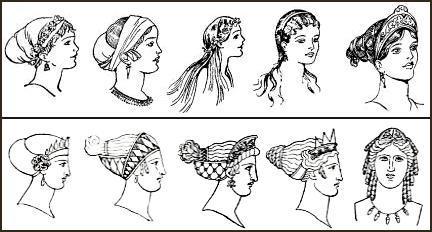
Often because of the heat, himnations were popular (similar to the Roman tunica, or toga), but many pictures and art of the time showed women and men alike continuing to wrap the fabric around their heads.
Modeled by Augustus from the Pontifex collection.

Keep reading
489 notes
·
View notes
Text
at this point how are you not anti-capitalist? don’t you think it’s messed up that people can work 2 jobs but are living paycheck to paycheck but are supposed to have thousands in savings, and be expected to pay for healthcare, food, and rent? how about the fact that you can probably never own a house in your lifetime, and if you want to live away from your family you will need to share a place with 6 roommates just to keep things afloat? does it make you angry that you’re dying for a living? don’t you think it’s mind boggling how the last time there was a technological space race it was between two super power countries but recently it has between the 2 richest men in the world? don’t you think the wealth gap between average person is far too wide? don’t you feel angry reading about “self made” success stories about how “hard” they worked when there is an obvious inequality in the opportunities they had in the first place? doesn’t it make you scared that the earth is being destroyed by exploitative capitalism? doesn’t it make you angry?
40K notes
·
View notes
Note
Your blog is truly beautiful and mesmerising! 🖤
Thank you so much💕💕 I just found this I’m kind of new to this app💕
3 notes
·
View notes
